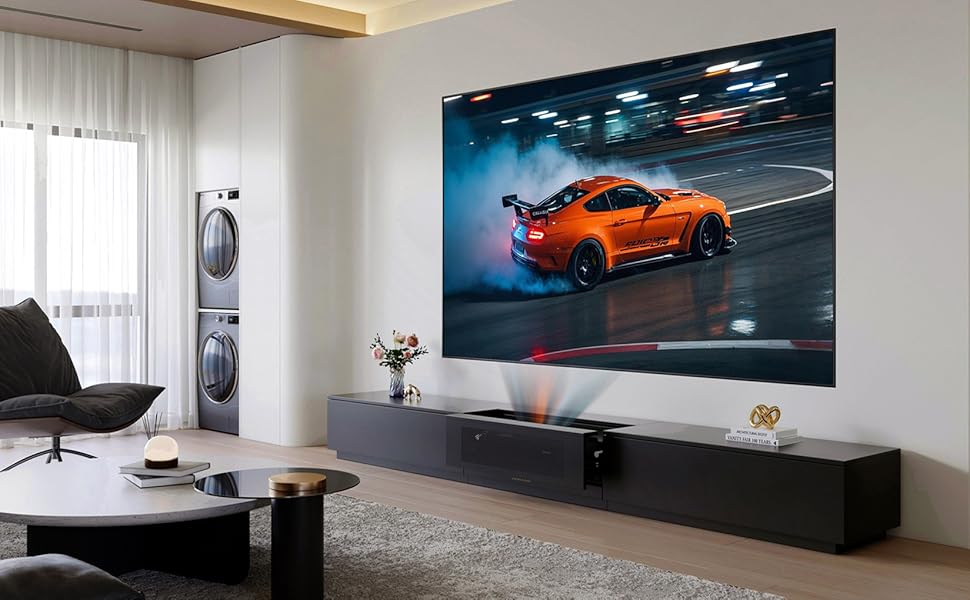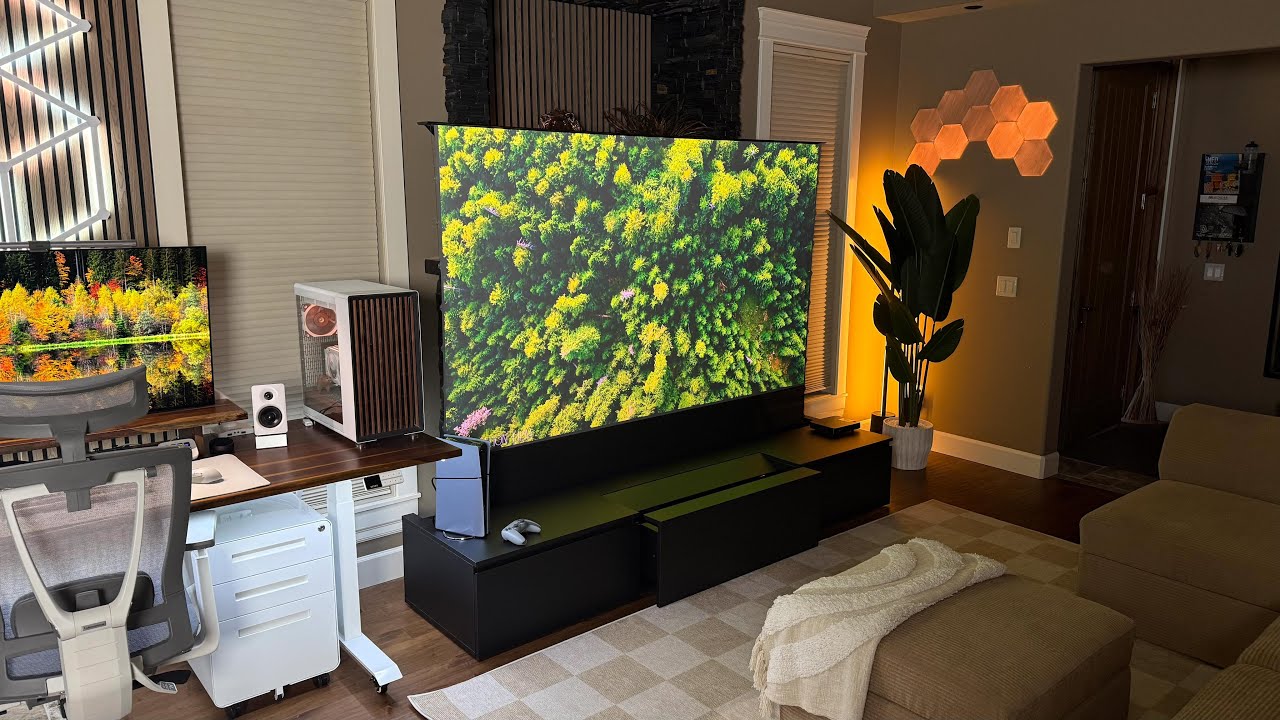Introduction
If you own an Ultra Short Throw (UST) projector, you already know it delivers big-screen entertainment with minimal space requirements. However, to get the best picture quality, especially in rooms with ambient light, you need the right screen. That’s where UST ALR (Ambient Light Rejecting) projection screens come in.
These specialized screens enhance contrast, reduce glare, and maintain vibrant colors even in bright environments, making them ideal for living rooms, home theaters, and commercial spaces.
In this guide, we’ll cover:
✔ What makes ALR screens different (and why they’re essential for UST projectors)
✔ Different types of UST ALR screens (and which one fits your needs)
✔ Best use cases (where ALR screens shine)
✔ How to choose the right ALR screen (size, gain, material, and more)
Let’s dive in!
Why Do UST Projectors Need ALR Screens?
Unlike standard projector screens, UST ALR screens are engineered to:
✅ Reject ambient light from windows, lamps, and ceiling lights
✅ Prevent hotspots & washout (common issues with UST projectors)
✅ Enhance contrast & black levels for a more cinematic experience
✅ Maintain wide viewing angles without color shifting
Without an ALR screen, a UST projector’s image can appear dull and faded in well-lit rooms.

Types of UST ALR Projection Screens
Not all ALR screens are the same. Depending on your setup, you’ll need to choose between these three main types:
1. Fixed-Frame ALR Screens
➤ Best for: Dedicated home theaters, media rooms
➤ Pros:
- No wrinkles or curling (permanent tensioned frame)
- Superior flatness for sharp UST projection
- Highest durability
➤ Cons:
- Not retractable (permanent wall installation)

2. Motorized Drop-Down ALR Screens
➤ Best for: Living rooms, multi-use spaces
➤ Pros:
- Retractable (disappears when not in use)
- Space-saving & elegant
- Available in tab-tensioned models to prevent waves
➤ Cons:
- Slightly less flat than fixed-frame screens

3. Floor-Rising ALR Screens (Motorized)
➤ Best for: Ultra-clean setups, luxury home theaters
➤ Pros:
- Hidden under the floor when not in use
- No ceiling mounting required
- Perfect for UST projectors placed on media consoles
➤ Cons:
- Higher cost

Key Features to Look for in a UST ALR Screen
1. Screen Gain (Brightness Enhancement)
- 0.8–1.0 Gain: Natural colors, wider viewing angles (best for dark rooms).
- 1.1–1.5 Gain: Brighter image, better for ambient light (narrower sweet spot).
2. Viewing Angle
- UST projectors need at least 160° horizontal viewing angles to avoid color shift when seated off-center.

3. ALR Technology (Directional Light Control)
- Dual-Layer ALR: Blocks light from above/sides while reflecting projector light forward.
- Micro-Perforated ALR: Allows sound penetration (great for front speaker setups).
4. Screen Size & Aspect Ratio
- 16:9 (Standard): Best for movies, TV, and gaming.
- 2.35:1 (CinemaScope): Ideal for ultra-widescreen films.
Best Use Cases for UST ALR Screens
|
Scenario |
Recommended ALR Screen Type |
|
Bright living room with windows |
High-gain (1.2–1.5) fixed-frame or motorized ALR screen |
|
Dedicated home theater (controlled lighting) |
1.0 gain fixed-frame ALR for natural colors |
|
Multi-purpose room (needs a retractable screen) |
Tab-tensioned motorized ALR screen |
|
Luxury setup (hidden screen preferred) |
Floor-rising motorized ALR screen |
How to Install & Optimize Your UST ALR Screen
1. Proper Projector Alignment
- UST projectors must be perfectly centered to avoid distortion.
- Use a laser alignment tool for precision.

2. Lighting Control
- ALR screens work best when ceiling lights are behind the viewer.
- Use bias lighting behind the screen to improve perceived contrast.

3. Screen Maintenance
- Dust gently with a microfiber cloth.
- Avoid touching the screen surface (oils can damage coatings).
Final Thoughts: Is a UST ALR Screen Worth It?
Absolutely! If you want the best possible image quality from your UST projector—especially in rooms with ambient light—an ALR screen is a must.
🔹For dark home theaters: A fixed-frame 1.0 gain ALR screen delivers the most accurate colors.
🔹 For living rooms: A high-gain (1.2+) motorized ALR screen combats light interference.
🔹 For sleek, hidden setups: A floor-rising ALR screen offers a premium solution.
Ready to Upgrade Your UST Projector Setup?
Get the Shore Floor-Rising Screen for UST>>
Have questions? Contact our home theater experts for personalized recommendations!
Would you like any additions, such as brand comparisons or installation tips? Let me know how I can refine this further for your e-commerce store!




